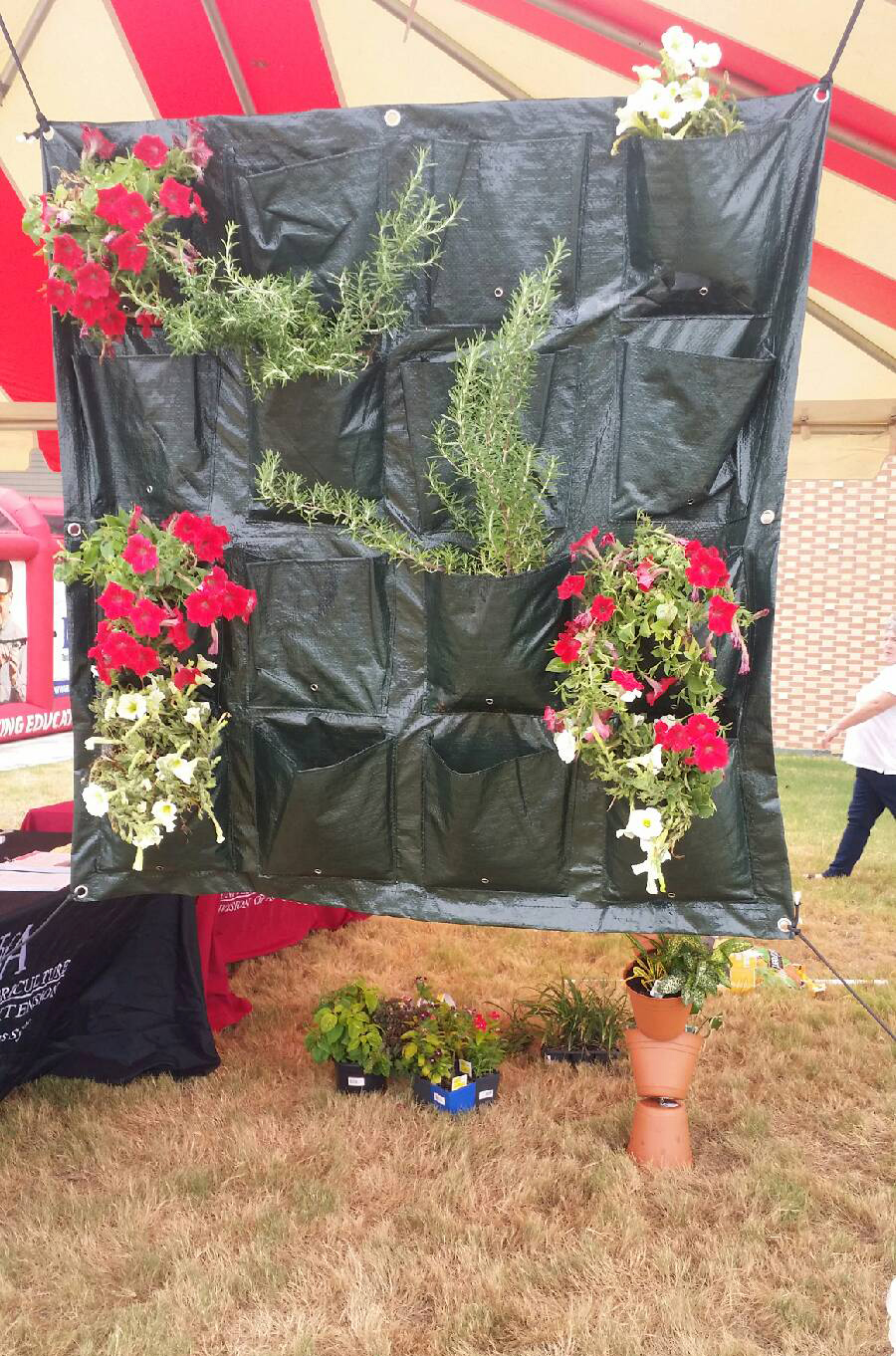Vertical gardening good for aesthetics, energy savings, water quality
By Will Calcote
For the Cooperative Extension Service
U of A System Division of Agriculture
Fast facts
- Vertical gardening takes advantage of empty vertical space such as walls or fences
- Green walls can be located indoors or outdoors and are easy to maintain
- Urban environments are conducive to green walls
- Vertical gardens require little bending over and may benefit senior citizen gardeners
(533 words)
PINE BLUFF, Ark. – Rather than hunching over a garden bed, imagine perusing all your favorite plants at eye level. Creative gardeners don’t necessarily need a lot of outdoor horizontal space, said Lee Anderson, Jefferson County Extension staff chair for the University of Arkansas System Division of Agriculture.
Vertical gardening, which takes advantage of vacant up and down spaces such as walls or fences, is an affordable alternative to the conventional garden that offers several benefits.

VERTICALLY INCLINED -- Vertical gardens are easy to maintain and suitable for urban landscapes. (U of Arkansas System Division of Agriculture photo by Lee Anderson)
“Vertical gardens, often referred to as green walls, are essentially self-sufficient, ‘living walls’ that can be free standing or attached to the interior or exterior of a building,” Anderson said. “They differ from green facades such as ivy walls in that the plants actually grow within a structural support.”
These upright gardens can be set up indoors and outdoors, he said. Though there is a wide variety of vertical garden types, the common design consists of rows of plants that are staggered vertically. The layered rows of plants enable water to travel from the top row down via a drip irrigation system or hand watering.
Unused urban spaces are conducive to green walls. Vertical garden structures can be affixed to fences or walls, or hung from rain gutters. The gardens can be used to improve the aesthetic qualities of plain spaces and shield structures from exposure to the elements.
“In an urban setting, green walls increase local biodiversity and have the potential to improve the morale of those who live, work and play in the community,” Anderson said.
Anderson says vertical gardens offer potential benefits for:
- senior citizens since a green wall doesn’t require much bending or intensive work. Seniors can simply walk to their garden and harvest their fresh salad mix or herbs.
- energy savings, as the garden can act as a cooling barrier between the sunlight and a residence.
- local water systems, since potted plants catch rainfall before it hits the ground, the effect of storm water on the environment is lessened.
Assembly and maintenance
Constructing a vertical garden can be as simple or complex as the gardener prefers, Anderson said.
Structures for vertical gardens can be purchased at landscaping and DIY stores. A wooden pallet stuffed with bags of growing media such as potting soil or compost is a common design. Be sure to attach the vertical garden structure to something sturdy as wind can knock it over, he said.
Other ideas include pots hung on hex wire, shelves hung from zip ties, an upright pallet with landscape fabric or hanging soda bottles individually packed with soil.
While gardeners can rely on rainfall for outdoor green walls hung, though they should add water as needed, Anderson said. Containers should be able to drain excess water to prevent root rot.
“Maintaining a vertical garden is simple,” Anderson said. “You will not have to worry about weeding or setting up row tillers. You only need to have adequate water for your plants and a water-soluble fertilizer to help strengthen your plants.”
The Jefferson County Extension Office will host public workshops on how to build vertical gardens in the spring 2016 growing season. For more information, call (870) 534-1033 or contact your county extension office.
Pursuant to 7 CFR § 15.3, the University of Arkansas System Division of Agriculture offers all its Extension and Research programs and services (including employment) without regard to race, color, sex, national origin, religion, age, disability, marital or veteran status, genetic information, sexual preference, pregnancy or any other legally protected status, and is an equal opportunity institution.
# # #
Media Contact: Mary Hightower
Dir. of Communication Services
U of A Division of Agriculture
Cooperative Extension Service
(501) 671-2126
mhightower@uada.edu
Related Links